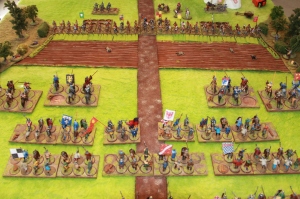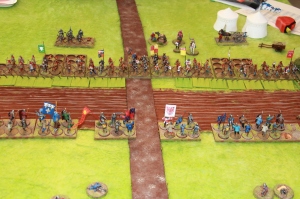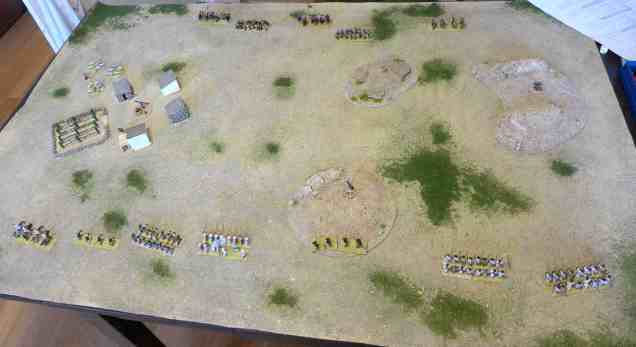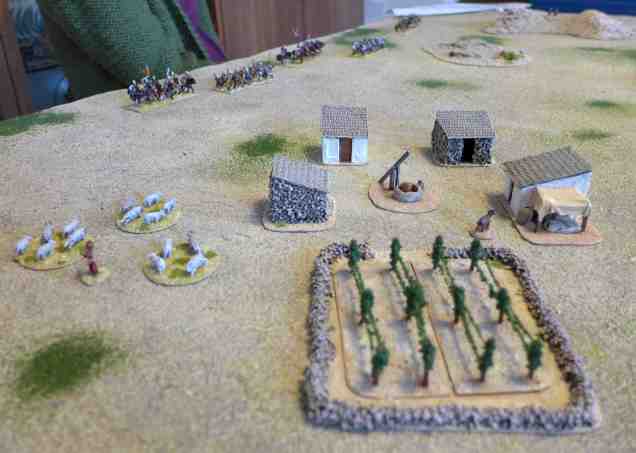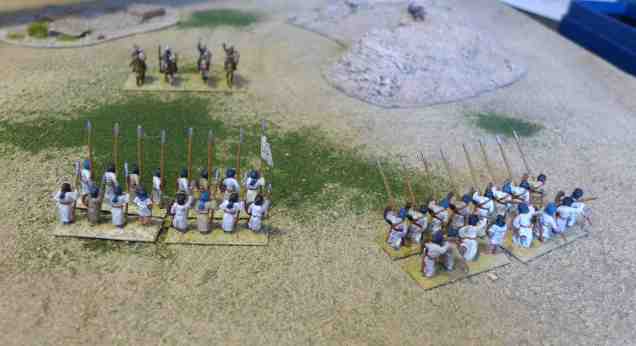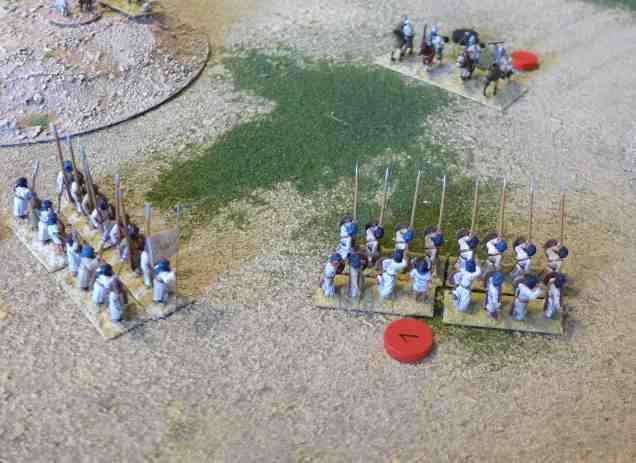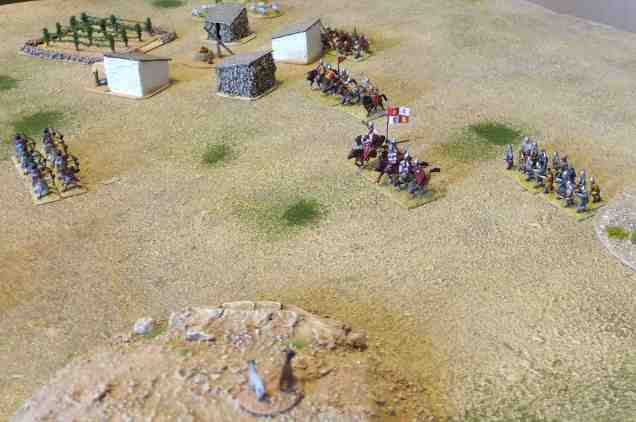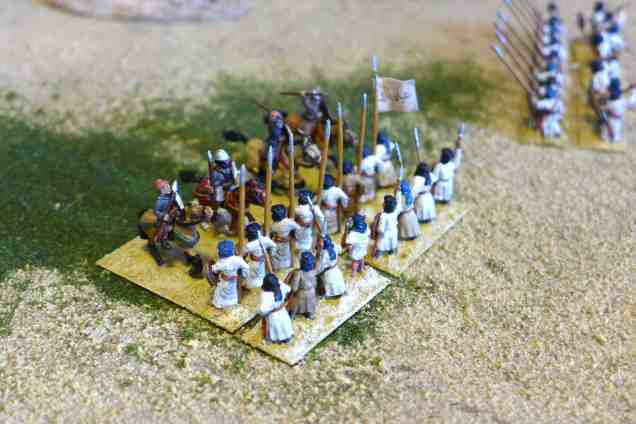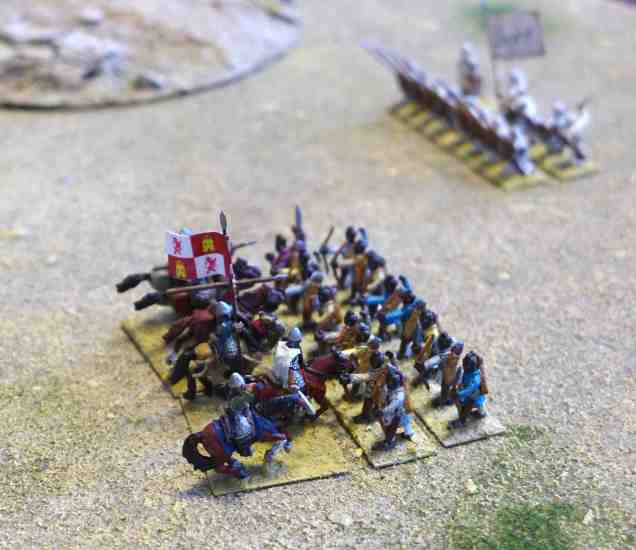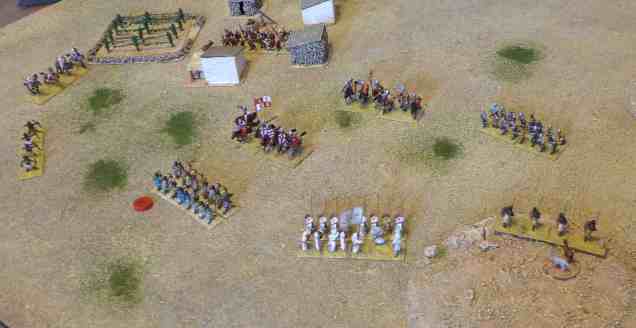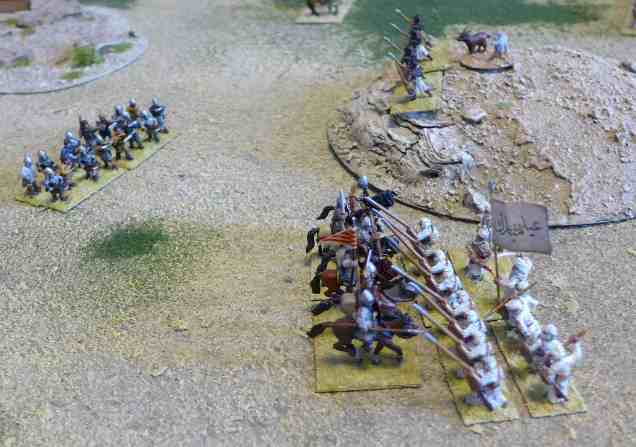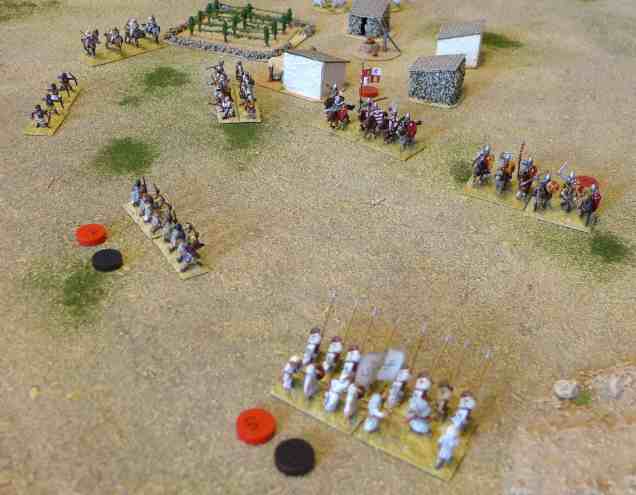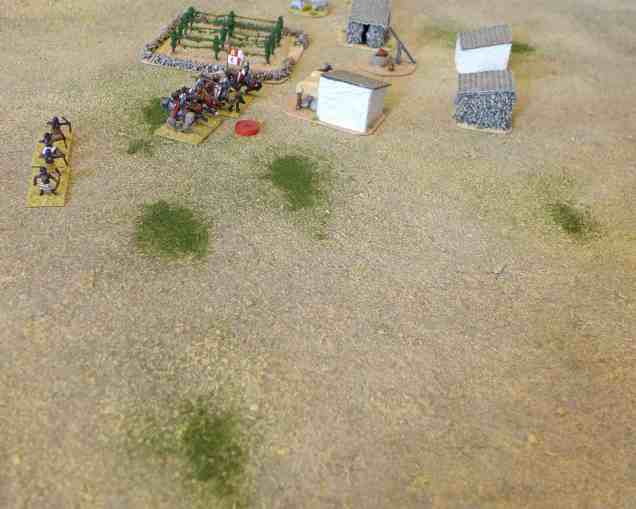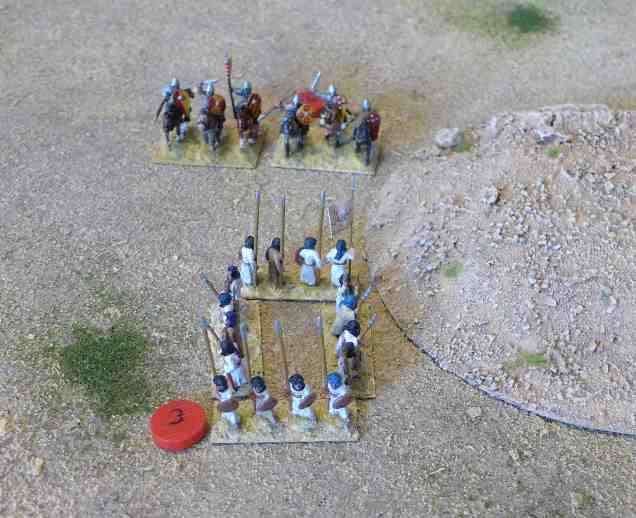Don’t kill the messenger, that’s what I kept saying. Would K. listen? No.
But let’s start at the beginning. Last weekend we finally inaugurated the old table in the new flat and had a game of Lion Rampant. After having a go at the scenario ‘The Messenger’ with Mick, I decided to introduce it to K. This time, we stuck to the retinues from the rule book, me taking the Almoravids (using the ‘Berber’ list) and K. the Spanish.


The scenario stated that I had to get a messenger from my watch tower to the small village while K. had to intercept him. The messenger was attached to one unit of Foot Yeomen – as I didn’t have an appropriate figure, I just supposed he had gone undercover and donned the clothing of an Almoravid warrior…


While my main force advanced, K. moved her light cavalry into position to cover the road. I decided to shadow them with my own light cavalry. However, as soon as the rascals were out of sight of my commander, they wouldn’t budge and stood behind the woods for the rest of the game. Several times I tried to perform a ‘skirmish’ manoeuvre against K.’s horsemen, but to no avail!
Meanwhile, K. moved her main force in position for what looked like a head-on battle.


The battle started in earnest when a wild charge got her mounted Men-at-Arms to charge my Foot Yeomen. K. made the mistake of positioning her knights at her far left flank, where they were unsupported by infantry. However, fortunately for her, my tactical acumen wasn’t any better and the Foot Yeomen were similarly isolated. The clash severely damaged my infantry, which a couple of attacks later succumbed to the ferocity of the cavalry.

My center initially advanced in good order – I was lucky with activation rolls and for some time convinced myself that I might be able to punch through.

Especially my Fierce Foot were phenomenal and did heavy damage to the Spanish troops. However, I never got rid of the light Spanish cavalry lingering on the hill, and as soon as the unit with the messenger was in range, K. charged.

And that’s how she did kill the messenger.
Another great game! We are slowly getting the hang of Lion Rampant, although we both made tactical mistakes – me more than K., and that’s why I lost. I should have supported my right flank and most importantly I should have dealt with K.’s cavalry in some way. Sending my light horse on an errand on the left flank was a bad idea, as they were basically out of the game.
Still, we both like Lion Rampant very much and are keen to try other scenarios. Maybe next time, I’ll take the Spanish – or maybe I’ll think before I act and make a plan for a change.
